
Tuxedo is a town located in Orange County, New York, United States, along the Ramapo River. As of the 2020 census, the town had a total population of 3,811. The town is in the southeastern part of the county in the Ramapo Mountains. New York State Route 17 and the New York State Thruway pass through the town. The name is derived from a Lenape word tucseto, which has several known meanings.

Tuxedo Park is a village in Orange County, New York, United States. Its population was 645 at the 2020 census. It is part of the Poughkeepsie–Newburgh–Middletown metropolitan area as well as the larger New York metropolitan area. Its name is derived from an indigenous Lenape word of the Munsee language, tucsedo or p'tuxseepu, which is said to mean 'crooked water' or 'crooked river'.

Emily Post was an American author, novelist, and socialite famous for writing about etiquette.

The Avery Coonley House, also known as the Coonley House or Coonley Estate was designed by architect Frank Lloyd Wright. Constructed 1908–12, this is a residential estate of several buildings built on the banks of the Des Plaines River in Riverside, Illinois, a suburb of Chicago. It is itself a National Historic Landmark and is included in another National Historic Landmark, the Riverside Historic District.

Pierre J. Lorillard IV was an American tobacco manufacturer and thoroughbred race horse owner.
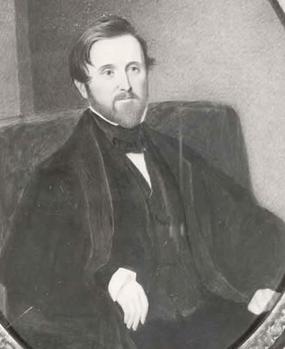
Alexander Jackson Davis was an American architect known particularly for his association with the Gothic Revival style.
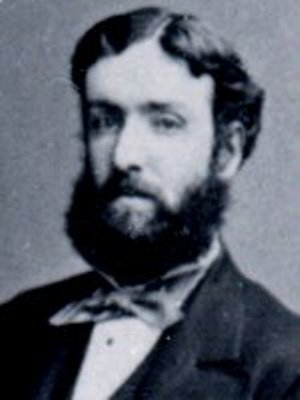
Bruce Price was an American architect and an innovator in the Shingle Style. The stark geometry and compact massing of his cottages in Tuxedo Park, New York, influenced Modernist architects, including Frank Lloyd Wright and Robert Venturi.

George Franklin Barber was an American architect known for the house designs he marketed worldwide through mail-order catalogs. Barber was one of the most successful residential architects of the late Victorian period in the United States, and his plans were used for houses in all 50 U.S. states, and in nations as far away as Japan and the Philippines. Over four dozen Barber houses are individually listed on the National Register of Historic Places, and several dozen more are listed as part of historic districts.
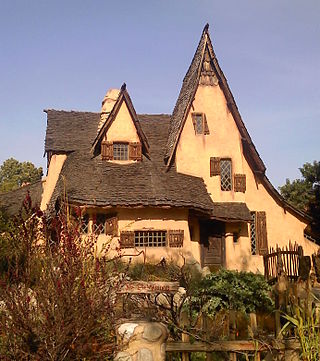
Storybook architecture or fairytale architecture is a style popularized in the 1920s in England and the United States. Houses built in this style may be referred to as storybook houses.

Tuxedo station is a commuter rail stop owned by Metro-North Railroad serving trains on the Port Jervis Line, located in the town of Tuxedo, New York, with commuter rail to Hoboken and its connections to New York City.

Top Cottage, also known as Hill-Top Cottage, in Hyde Park, New York, was a private retreat designed by and for Franklin D. Roosevelt. Built in 1938-39, during Roosevelt's second term as President of the United States, it was designed to accommodate his need for wheelchair accessibility. It was one of the earliest such buildings in the country, and the first significant building designed by a person with a disability.

The shingle style is an American architectural style made popular by the rise of the New England school of architecture, which eschewed the highly ornamented patterns of the Eastlake style in Queen Anne architecture. In the shingle style, English influence was combined with the renewed interest in Colonial American architecture which followed the 1876 celebration of the Centennial. The plain, shingled surfaces of colonial buildings were adopted, and their massing emulated.

Walker & Gillette was an architectural firm based in New York City, the partnership of Alexander Stewart Walker (1876–1952) and Leon Narcisse Gillette (1878–1945), active from 1906 through 1945.

James Brown Lord was an American architect who worked in the Beaux-Arts style and practiced in New York City. His Appellate Division Courthouse of New York State was his most prominent commission, noted at the time of his premature death, at the age of forty-three. He designed one of the first of the Carnegie libraries, the Yorkville Library of the New York Public Library, at 222 East 79th Street.

The Mamakating Park Historic District is located on the ridge north of Masten Lake on the highest ground in the Town of Mamakating, New York, United States. It is a Catskill vacation community, originally intended to be the much larger Sullivan County Club, built in the 1890s.

Ormonde (1885–88) is a Shingle Style country house built on the eastern shore of Cazenovia Lake in Cazenovia, New York. It was designed by architect Frank Furness for George R. Preston, a New Orleans banker who settled in Philadelphia, Pennsylvania.
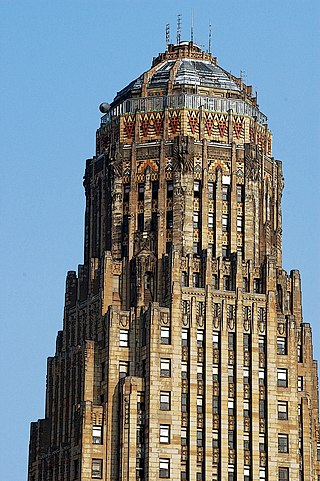
The Architecture of Buffalo, New York, particularly the buildings constructed between the American Civil War and the Great Depression, is said to have created a new, distinctly American form of architecture and to have influenced design throughout the world.

The Cottage Home Historic District is a historic district and neighborhood located on the near east side of Indianapolis, Indiana. A small portion of Cottage Home is listed on the National Register of Historic Places while a larger area is listed on the state and local levels. Known for its preponderance of "cottage-style" homes built with strong Victorian influences, Cottage Home has historically been a working class neighborhood. Numerous industrial buildings are also scattered throughout the district, providing a base of economic activity. Today, however, many of these buildings are vacant, providing a special challenge to preservation and urban renewal efforts.
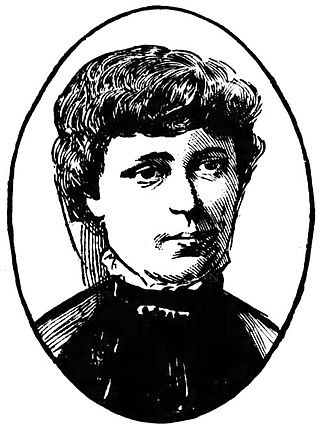
Emily Elizabeth Holman, better known by her professional name of E. E. Holman, was one of the first female architects of Pennsylvania. She was active from the 1880s to her retirement in 1914 and was responsible for planning several important historical sites like the Goold House in the Wilder Village Historic District, Wilder, Vermont and the National Park Seminary among many others.

St. Mary's-in-Tuxedo Episcopal Church, otherwise simply referred to as St. Mary's-in-Tuxedo, is an active Episcopal church in Tuxedo, New York, located within the historic village of Tuxedo Park.






















